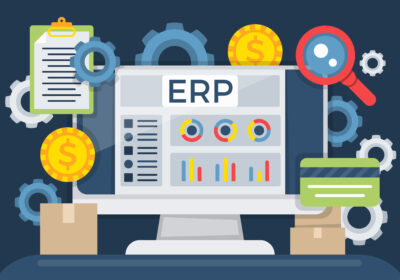Enterprise application development is very important to the running and growth of businesses. Some of the most commonly used applications include CRM and ERP systems, while others are built to handle certain company’s needs. Such applications enable the streamlining of workflows, easier management of data, and enhanced communication throughout the organization. Still, enterprise application development doesn’t come without problems.
As the size of a business grows with its requirements, it can be a very daunting task to develop enterprise applications that are scalable, secure, and user-friendly. We will discuss some of the common problems in enterprise application development and how a business may overcome those problems.
Complexity of Requirements
One of the big challenges in developing enterprise applications is that they entail complex requirements. Large organizations have diverse departments, teams, and workflows, each with certain, specific needs. The idea of gathering, analyzing, and defining these requirements becomes very overwhelming.
Why it’s hard:
- Many Interests: The different groups within an organization might have conflicting requirements and needs. For example, the financial group might need strong reporting capabilities, while the marketing group might want to interface with social media providers. Handling these divergent needs can lead to scope creep.
- Shifting Needs: Businesses evolve continuously. You cannot forecast when the application needs to scale or change.
How to overcome it:
- Proper Requirements Collection: Interaction with all those key stakeholders right from the beginning and maintaining a regular dialogue throughout the development process can keep the complexity at bay.
- Modular Design: Designing the application in modularity can provide room for future changes and additions.
Legacy System Interface
There are many legacy systems that most businesses use; it can be an older database or an on-premise software solution, or any other enterprise tools that have been in use for years. This is one of the most challenging aspects of enterprise application development—integrating new applications with the already existing systems.
Why is this so hard?
- Incompatibility: The legacy system was not prepared for interoperability with newer software applications. The presence of format inconsistency and incompatibility between software applications leads to data integration issues.
- Expensive and Time-Consuming Affair: The task of overhauling or replacing legacy systems can be quite an expensive affair in many situations. Organizations, in some cases, are simply not ready to take such a risk, as the stakes associated with this migration into alternatives appear too high.
How to overcome it:
- API-First Development: Newer systems can be integrated with older systems without disturbing the core functionality, and hence it is easier to integrate using APIs (Application Programming Interfaces).
- Data Migration Strategy: In legacy system upgrades, a complete data migration strategy would ensure no critical data gets lost while both systems interplay perfectly.
Security-Related Issues
Security is always a top concern while developing enterprise applications. Enterprise applications handle sensitive information that enterprises have—from financial data records to personal information and business strategies. Cyber threats need to be protected for the application.
Why is it tough?
- Complexity in Security Requirements: Enterprises regularly face strict compliance requirements such as GDPR and HIPAA, and non-compliance can result in fines and reputation damage.
- Threat Landscape in Evolution: Cyber threats and attack strategies are constantly changing, and keeping pace with the possible security vulnerabilities is very challenging for businesses.
How to overcome it:
- Security by Design from the Very Beginning: Security needs to be included right from the beginning of the development process. This strategy is known as “security by design.” Here, security is incorporated at every layer of the application.
- Regular Audits and Penetration Testing: Continuous and frequent monitoring of the application for vulnerabilities will address security issues before they become serious ones.
Scalability and Performance
As the enterprises expand, so does the volume of data, the number of users, and the complexity of operations. Ensuring the application can handle the growth with satisfactory performance is a large challenge.
Why it is challenging:
- Handling Heavy Loads: The application should scale up, meaning that it can handle more users and more data without impacting performance, as well as scale out with more servers or resources.
- Unpredictive Growth: It’s not possible to predict the future growth of the business or the application. This typically leads to under-provisioning or over-provisioning resources.
How to overcome it:
- Scalable Architecture: Scalability, not requiring major re-engineering for handling increased loads, can be accomplished with any of the cloud platforms and microservices architecture.
- Load Testing and Optimization: Continuous performance testing throughout the development lifecycle makes it possible for developers to handle expected workloads and optimize code as well as infrastructure.
Challenges in UX
Enterprise applications should be accessed by a wide set of users, often characterized by varying degrees of technical skills. The application can be accepted and used properly only if it provides seamless and intuitive user experience (UX).
It is challenging because:
- Mixed Bag of Users: All employees have different tasks to perform. Therefore, using a one-size-fits-all approach may not fit in. It is not easy to balance simplification with functionality.
- Change Management: Implementing an enterprise application is a change in the way employees work. If the application is not user-friendly, employees might resist adopting it.
How to overcome it:
- User-Centered Design: Involve end-users during the design and testing cycle so that the application best suits their needs and is easy to use.
- Training and Support: Proper training and support help make the transition to adopting a new application smoother on the employees’ front, while also allowing the employees to make the best use of it.
Time and Budget Constraints
Enterprise application development is quite extensive, as it involves many teams, a lot of development stages, and many iterations. Hence time and budget management is a challenge in producing high-quality products.
Why it’s challenging:
- Long Lead Times: With large projects, lead times can be as long as months and years. A significant number of months would be added to the project deadline when there are delays or scope changes.
- Unexpected Costs: Some features, third-party integrations, or security issues might be found during development. These need extra investment into the project.
How to counter it:
- Agile Development: With agile development, incremental release is possible. The timeline can be easily controlled, and the project adjusted to new challenges as they emerge.
- Sensible Budgeting with Contingency: Budget planning with contingency provisions helps reduce the potential effects of unplanned expenditure.
Maintenance After Launch
Work doesn’t come to an end with the deployment of an enterprise application. The application needs constant maintenance, bug fixing, updates, and enhancements to function properly and serve the designed business purposes.
Why it’s tough:
- Continued Support: Dedicated resources cannot maintain and update enterprise applications because the dynamics of business are continuously changing.
- Compatibility with Future Technologies: The application has to be compatible with new technologies and standards as they may emerge from time to time to remain relevant.
How to overcome it:
- Comprehensive Support and Maintenance Plans: After the app is developed, have a well-designed support and maintenance program in place so that the application can be updated periodically, and bugs are fixed quickly.
- Version Control and Documentation: Using version control will allow documenting the updates and changes in detail and can scale and maintain the app over time.
Conclusion
Building enterprise applications is no cakewalk. Be it gathering complex requirements, integrating with legacy systems, dealing with security, or addressing scalability concerns, developers have numerous challenges to handle. However, with careful planning and the implementation of sound development practices, many of these issues can be resolved.
Having overcome these challenges, business houses should collaborate with development teams that are experienced in leading a venture through the complexities of enterprise applications. With the right strategy and support, enterprises can develop applications that help improve productivity, streamline operations, and enhance business growth.
Verbat specializes in helping enterprises build robust, scalable, and secure applications that fit the needs of each one. If you’re looking to develop an enterprise solution for every challenge your business throws at you, get in touch with us today!





